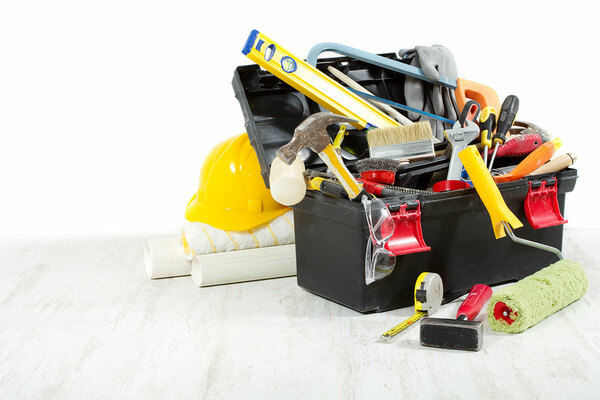You are viewing 1 of your 1 free articles
An update to the Decent Homes Standard is overdue. Here’s how it should change
The Decent Homes Standard belongs to an age of Woolworths and Blockbusters – it needs to be revamped for 2019, writes Mark Henderson
Considerable time has been spent on the debate about building more homes, which is absolutely right. But at the same time, it shouldn’t come at the expense of our current customers. Their expectations and needs can’t be put on hold because the issue of provision is dominating proceedings.
Even though the Grenfell disaster happened more than two years ago, we mustn’t lose sight of the impact it had on our sector. As many have stated, it shook us to the core.
Post-Grenfell, there has been a renewed focus and debate around housing standards. But there is still so much the housing sector must do to guarantee the decency of the homes we provide.
That’s not to say nothing is being done – we are making progress. Since 2001, for example, the number of properties meeting the government’s official definition on non-decent homes fell from 30% to 15%, with 1.4 million homes made habitable.
Huge strides have been made to improve the lives of those in social housing and the number of dwellings that failed to meet the standard (13%) remains significantly lower than private rented (25%) and owner-occupied homes (19%).
Yet progress has stalled. The Decent Homes Standard hasn’t been reviewed since 2006. That’s quite remarkable given the speed of change in this modern world.
In 2006, for instance, we could still walk into a Woolworths, we were besotted with MySpace and Friends Reunited, and we all had a Blockbuster membership card. That seems like another lifetime. Yet that was the last time we looked at the Decent Homes Standard.
Today, for Woolworths see Amazon, for MySpace and Friends Reunited see Facebook, and for Blockbuster see Netflix. Things have moved on – but the Decent Homes Standard hasn’t.
Given its 13-year dormancy period, it isn’t a surprise to learn that the Decent Homes Standard falls short of the most basic expectations of what a decent home should look like today, if it ever did, some might say.
Can we honestly tell a customer today that their house with damp is decent because it isn’t life threatening? Is a home with poor insulation decent when it costs households an extra £650 per year to heat?
“Given its 13-year dormancy period, it isn’t a surprise to learn that the Decent Homes Standard falls short of the most basic expectations of what a decent home should look like today, if it ever did, some might say”
We need to dust off the cobwebs and place the Decent Homes Standard in open view, giving it the attention it deserves, and needs.
One of the challenges will be agreeing a consensus. There is a myriad view within the sector on what the ‘new’ Decent Homes Standard should look like. We need a serious debate to agree that new standard, implement it, and improve housing quality.
Let Home Group offer a starter for ten. We have identified three areas that would materially improve the lives of customers across the social housing sector.
The ‘new’ Decent Homes Standard should eradicate damp from social housing
Damp isn’t always dangerous enough to be considered a Category 1 hazard under current guidelines – emphasised by the fact there are still 897,000 homes with damp in England with no improvement since 2011.
We propose the existence of penetrating or rising damp be an automatic fail within the new standard and that mechanical ventilation be mandatory in the kitchen and bathroom if damp levels are above 5%.
A commitment to upgrade the minimum EPC rating from E to C and introduce minimum standards of insulation
The Decent Homes Standard currently sets a low basic minimum standard for heating and insulation with a commitment to provide a “reasonable degree of thermal comfort”.
While housing associations have almost eliminated properties with a rating of F-G, it’s still significantly below what’s needed to reduce fuel poverty. We need to target the 48% of housing association stock that has an EPC rating of D-E, which is costing the average B and E household an extra £650 per year in heating bills.
“Surely, we can’t be comfortable with the premise that decent should mean something most people would consider to be indecent. We are now well past the point where the standard should have caught up”
We support the outcome of the government’s consultation on the Clean Growth Strategy, which anticipates that all fuel-poor homes will be upgraded to EPC Band C by 2030 where practical, cost-effective and affordable. The ‘new’ Decent Homes Standard should incorporate this with an appropriate commitment to deliver energy efficiency and reduce fuel poverty.
Guaranteed minimum standards for each aspect of a decent home as informed by the experience and expectation of customers
The Housing Health and Safety Rating System (HHSRS) is failing households. The central issue is that we’re using a system designed to assess risk and prevent harm rather than meet standards of decency.
For example, take a house with damp in the bathroom, a loose handrail and old kitchen facilities that lead to food hygiene problems. By no definition should this be considered decent, and yet the HHSRS guidance uses this as an example of a house that is not hazardous enough to fail.
Our proposed solution is a new hybrid system, joining guaranteed minimum standards to ensure the decency of homes with HHSRS to protect households from severe hazards. The government should consult widely and create a set of minimum standards that provide a clear set of criteria to determine what passes and fails each element of a decent home, based on the experience and expectation of customers.
It would be harsh to criticise the Decent Homes Standard too much as it has done a good job in lifting housing standards to a tolerable level. But surely we can’t be comfortable with the premise that decent should mean something most people would consider to be indecent. We are now well past the point where the standard should have caught up.
The ‘new’ Decent Homes Standard may not grab the headlines like the housing crisis does, but its positive impact could be felt in homes the length and breadth of Britain, so let’s get it sorted!
Mark Henderson, chief executive, Home Group



